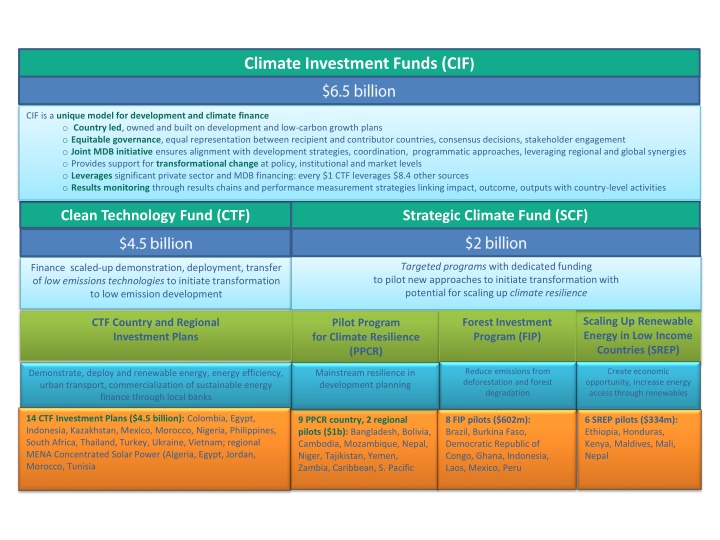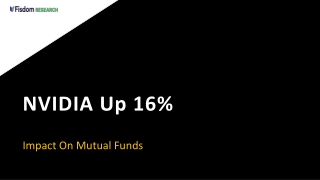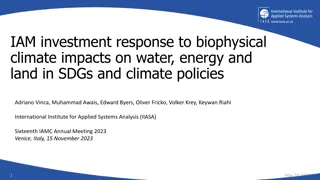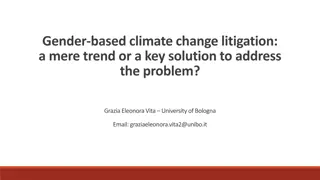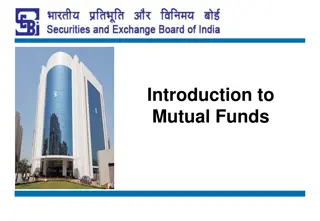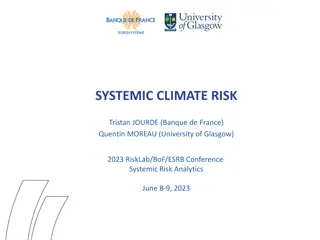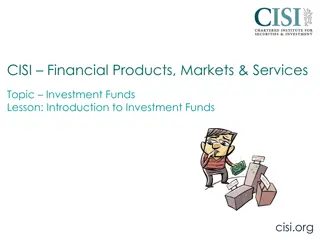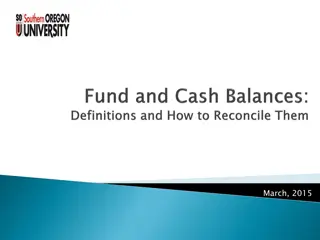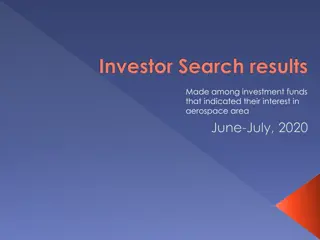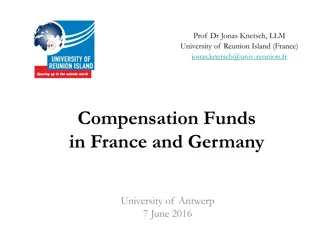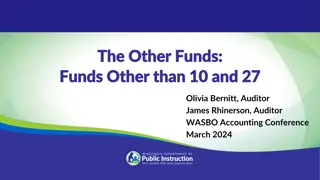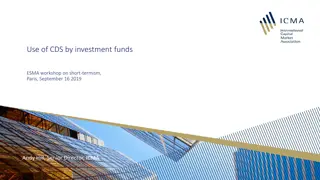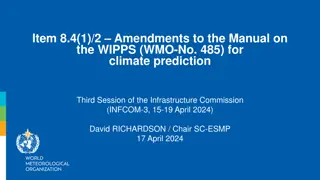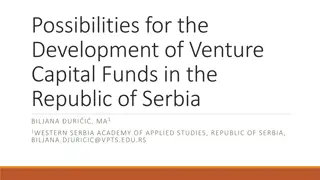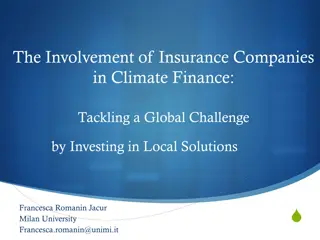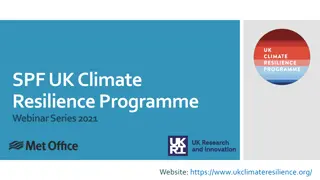Climate Investment Funds (CIF
CIF is a country-led, equitable governance model that leverages private sector and MDB financing to support transformational change in policies and institutions for low-carbon growth. It provides funding for clean technology, renewable energy, climate resilience, and forest conservation programs in various countries and regions.
Download Presentation

Please find below an Image/Link to download the presentation.
The content on the website is provided AS IS for your information and personal use only. It may not be sold, licensed, or shared on other websites without obtaining consent from the author.If you encounter any issues during the download, it is possible that the publisher has removed the file from their server.
You are allowed to download the files provided on this website for personal or commercial use, subject to the condition that they are used lawfully. All files are the property of their respective owners.
The content on the website is provided AS IS for your information and personal use only. It may not be sold, licensed, or shared on other websites without obtaining consent from the author.
E N D
Presentation Transcript
Climate Investment Funds (CIF) CIF is a unique model for development and climate finance o Country led, owned and built on development and low-carbon growth plans o Equitable governance, equal representation between recipient and contributor countries, consensus decisions, stakeholder engagement o Joint MDB initiative ensures alignment with development strategies, coordination, programmatic approaches, leveraging regional and global synergies o Provides support for transformational change at policy, institutional and market levels o Leverages significant private sector and MDB financing: every $1 CTF leverages $8.4 other sources o Results monitoring through results chains and performance measurement strategies linking impact, outcome, outputs with country-level activities Clean Technology Fund (CTF) Strategic Climate Fund (SCF) Targeted programs with dedicated funding to pilot new approaches to initiate transformation with potential for scaling up climate resilience Finance scaled-up demonstration, deployment, transfer of low emissions technologies to initiate transformation to low emission development Scaling Up Renewable Energy in Low Income Countries (SREP) Forest Investment Program (FIP) CTF Country and Regional Investment Plans Pilot Program for Climate Resilience (PPCR) Create economic opportunity, increase energy access through renewables Reduce emissions from deforestation and forest degradation Mainstream resilience in development planning Demonstrate, deploy and renewable energy, energy efficiency, urban transport, commercialization of sustainable energy finance through local banks 14 CTF Investment Plans ($4.5 billion): Colombia, Egypt, Indonesia, Kazakhstan, Mexico, Morocco, Nigeria, Philippines, South Africa, Thailand, Turkey, Ukraine, Vietnam; regional MENA Concentrated Solar Power (Algeria, Egypt, Jordan, Morocco, Tunisia 9 PPCR country, 2 regional pilots ($1b): Bangladesh, Bolivia, Cambodia, Mozambique, Nepal, Niger, Tajikistan, Yemen, Zambia, Caribbean, S. Pacific 8 FIP pilots ($602m): Brazil, Burkina Faso, Democratic Republic of Congo, Ghana, Indonesia, Laos, Mexico, Peru 6 SREP pilots ($334m): Ethiopia, Honduras, Kenya, Maldives, Mali, Nepal
CIF Governance Strategic Climate Fund (SCF) Clean Technology Fund (CTF) SCF Trust Fund Committee with 8 recipient and 8 contributor countries as Decision- Making Members; 2 MDBs as Non- Decision-Making Members; MDBs, Trustee, GEF, UNDP, UNEP, UNFCCC, and 4 self-selected civil society, 2 self-selected indigenous peoples and 2 self-selected private sector as Observers. CTF Trust Fund Committee with 8 recipient and 8 contributor countries as Decision-Making Members; 2 MDBs, and recipient country when funding is under consideration as Non-Decision- Making Members; MDBs, Trustee, GEF, UNDP, UNEP, UNFCCC, 4 self-selected civil society and 2 self-selected private sector as Observers. Pilot Program for Climate Resilience (PPCR) Forest Investment Program (FIP) Scaling Up Renewable Energy in Low Income Countries (SREP) balanced representation consensus decisions full stakeholder engagement PPCR Sub-Committee with 6 recipient (pilot) and 6 contributor countries and Adaptation Fund as Decision- Making Members; recipient country when funding considered as Non- Decision- Making Member; MDBs, Trustee, GEF, UNDP, UNEP, UNFCCC, and 4 self-selected civil society, 2 self-selected indigenous peoples and 2 self- selected private sector as Observers. SREP Sub-Committee with 6 recipient and 6 contributor countries as Decision-Making Members; MDBs, Trustee, GEF, UNDP, UNEP, UNFCCC, 4 self- selected civil society, 2 self- selected indigenous peoples and 2 self-selected private sector as Observers. FIP Sub-Committee with 6 recipient and 6 contributor countries as Decision-Making Members; MDBs, Trustee, UN- REDD Programme, Forest Carbon Partnership Facility (FCPF), GEF, UNFCCC, 2 self- selected civil society, 2 self- selected indigenous peoples, 2 self-selected private sector with 2 alternates each as Observers.
Climate Investment Funds and CTF Timeline 2007 2008 2009 2010 March -- UK Announces Environmental Transformation Fund. Anticipates development of WB/RDB fund. September -- US Announces Clean Technology Funding at Major Economies Meeting. December Bali climate meetings: informal/bilateral consultations January -- Climate Investment Fund Consultation Paper drafted. Anticipates 6 month design process. January 25 UK/Denmark host consultation meeting, Copenhagen March 4-5 Potential Donor Meeting, Paris April 14-15 -- CIF Design Meeting, IADB, Washington DC May 21-22 -- CIF Design Meeting, Potsdam. CIF Design finalized July 1 CIF Trust Fund approved by World Bank Board September 26 Donors Pledge $6.1 billion to CIF October First Partnership Forum and organizational meetings of the Trust Fund Committees November CTF Governance Framework Adopted November CTF Rule of Procedures Adopted December Guidance for CTF Investment Plans January Investment Plans for Egypt, Mexico and Turkey Approved January -- CTF Guidelines for Private Sector Operations February Investment Criteria for Public Sector Operations May CTF Financing Products, Terms and Procedures for Public Sector Operations May First CTF Projects approved for Mexico and Turkey March - Partnership Forum, ADB Manila March CTF Financing Products, Terms and Procedures for Private Sector Operations May Guidelines for Approval and Monitoring of CTF Preparation Grants November CTF Results Framework approved By November 2010 CTF funding was fully committed, with 13 Investment Plans totaling $4.3 billion endorsed. The Nigeria IP was also endorsed, pending availability of resources. Fifteen projects included in these investment plans, totaling $888 million, had been approved. February 3, 2011
CIF Design Issues Business Model no new institutions Trust Fund Committee to set strategy, allocate resources, set criteria for and endorse Investment Plans and approval of TF financing for projects. CIF to rely on MDB capabilities and project appraisal (incl fiduciary/env/social) and decision-making processes. No duplication of approval processes Small Program Office to facilitate Trust Fund Committee deliberations, support WB/RDB collaboration, and promote learning. Program Office has no role in screening Investment Plans/projects. Sunset Clause: Critical for agreement to proceed with CIF. CIF will take necessary steps to conclude its operations once a new financial architecture is effective unless the outcome of the UNFCCC negotiations indicates it is useful to continue its operations. Link to UNFCCC: No formal link. CIF would report on progress to UNFCCC Governance: Balance and number of seats. Role and number of observers. Selection of TF Committee members and chairs. Decision-making: Consensus Country Eligibility: ODA eligible and active MDB Financing Terms: Grants versus concessional loans/guarantees, and terms. Management of inflows and reflows. CIF Architecture: Number of Sub-Funds . Balance between efficiency (fewer separate funds); recognition of heterogenity of topics (clean energy technologies vs. forestry); and attractiveness for fund-raising. Minimum pledge to open new fund. Minimum contribution to be eligible for a contributor seat. Private Sector: Should there be a separate window? Investment Criteria: Definition of transformational investments. Each Fund develops own investment criteria. Key issues for CTF were: How to ensure that Investment Plans are country driven and not imposing targets outside of UNFCCC framework; definition of eligible low carbon actions: clean coal? gas switching? energy efficiency in fossil fuel power generation? role (or not) of CTF financing R&D (e.g. CCS) Resource Allocation: No formula. For CTF, decision to limit the number of countries to 20. First-come first-served distortions mitigated by criteria that Investment Plan that satisfied transformational expectations was needed; criteria targeted countries with relatively larger mitigation potential; and expectation that the country list would be regionally balanced. For other CIF funds: Expert Group given criteria and proposed country list. February 3, 2011
